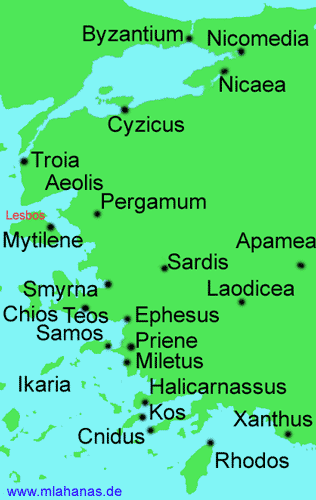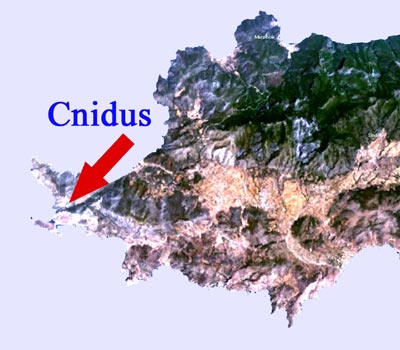|
|
Knidos or Cnidus (modern-day Tekir in Turkey) is an ancient Greek city in Asia Minor, once part of the country of Caria. It is situated at the extremity of the long peninsula that forms the southern side of the Sinus Ceramicus or Gulf of Kos (Cos). It was built partly on the mainland and partly on the Island of Triopion or Cape Krio, which anciently communicated with the continent by a causeway and bridge, and now by a narrow sandy isthmus. By means of the causeway the channel between island and mainland was formed into two harbours, of which the larger, or southern, was further enclosed by two strongly-built moles that are still in good part entire. The extreme length of the city was little less than a mile, and the whole intramural area is still thickly strewn. with architectural remains. The walls, both insular and continental, can be traced throughout their whole circuit; and in many places, especially round the acropolis, at the northeast corner of the city, they are remarkably perfect. Our knowledge of the site is largely due to the mission of the Dilettanti Society in 1812, and the excavations executed by C T Newton in 1857-1858. The agora, the theatre, an odeum, a temple of Dionysus, a temple of the Muses, a temple of Aphrodite and a great number of minor buildings have been identified, and the general plan of the city has been very clearly made out. The most famous statue by the elder Praxiteles, |

